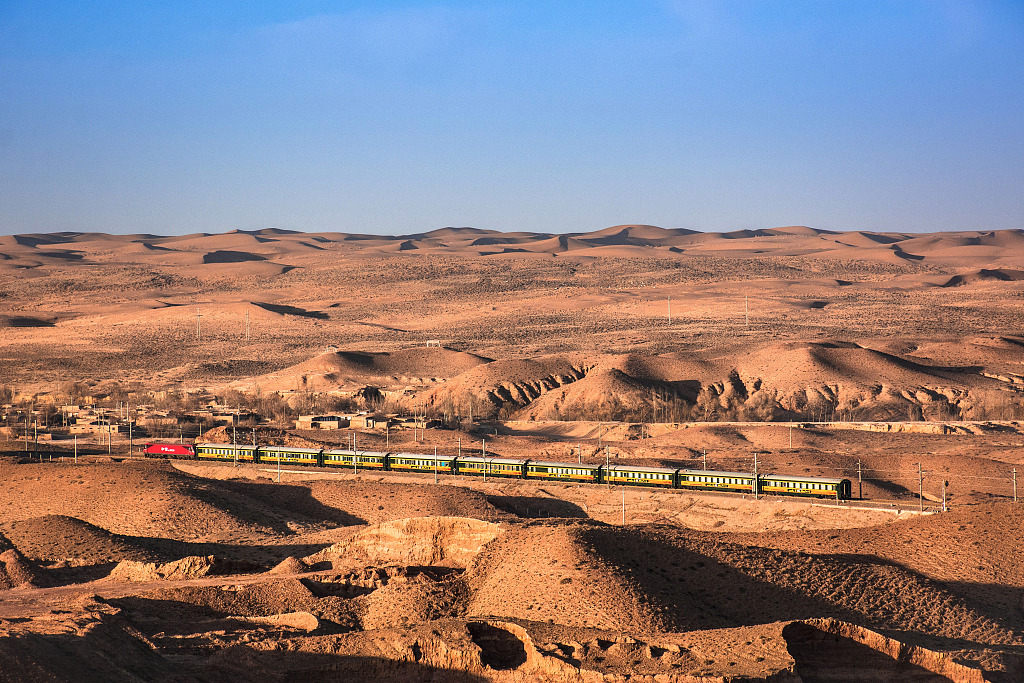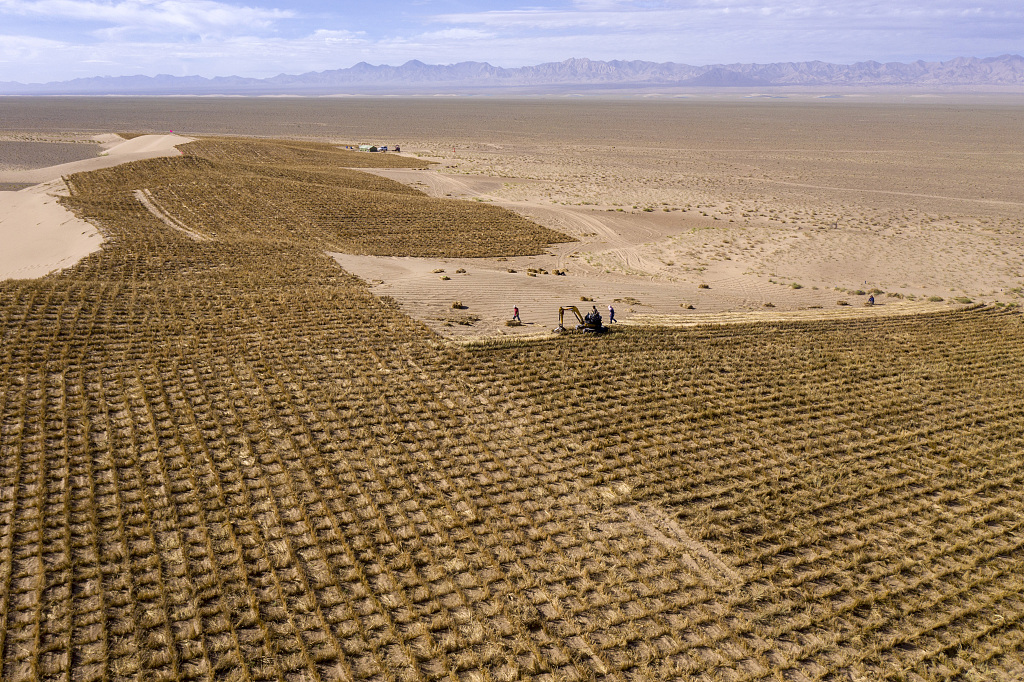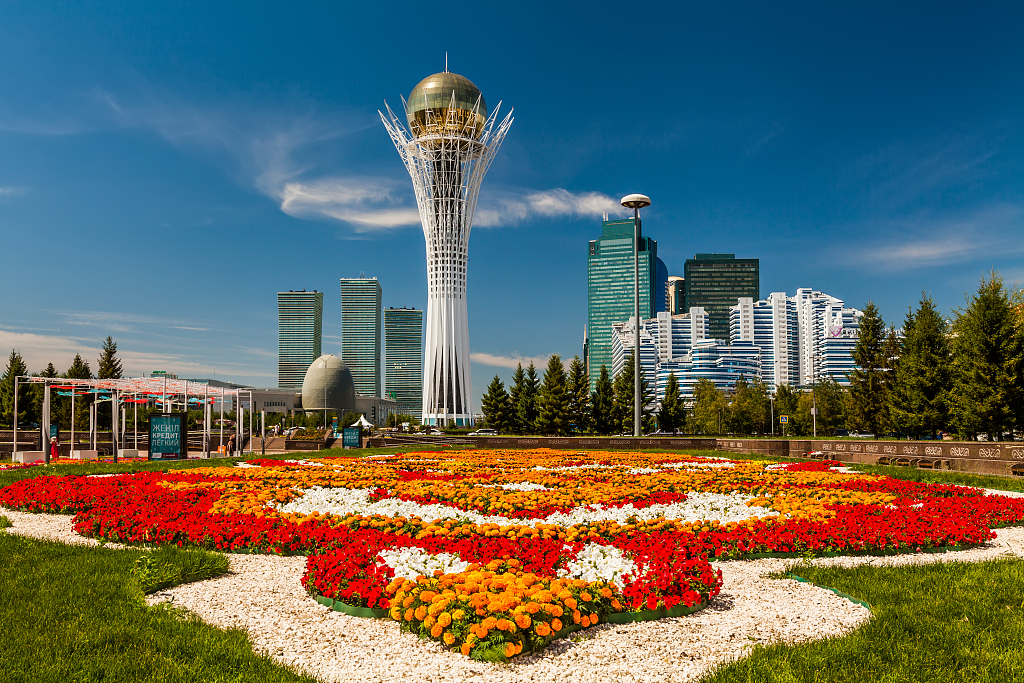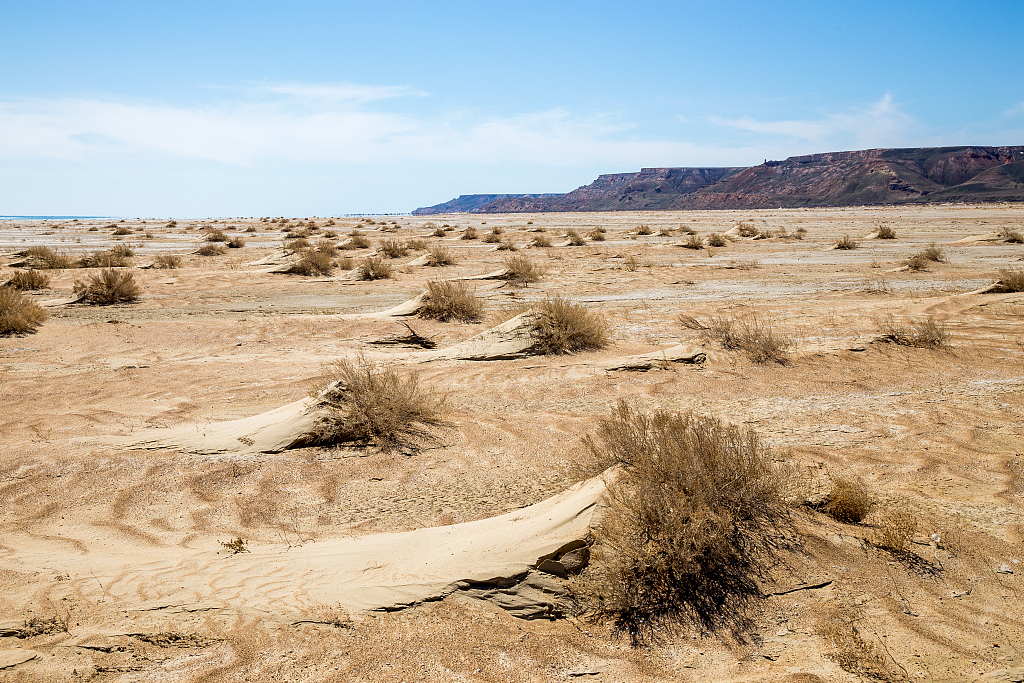Desertification, known as "the cancer of the Earth," poses a serious challenge to many areas of the world. About 500 million people have lived in degraded or desertified areas since the 1980s, according to the United Nations. Once troubled by serious soil erosion, land desertification and soil salinization, China has made headway in combating desertification.
Over the past 70 years, China has continuously tried to tame desertification through afforestation. More than half of China's manageable desertification land has been restored over the past decade, according to the National Forestry and Grassland Administration.

A view of the Baotou-Lanzhou Railway that crossed the Tengger Desert in Zhongwei City, northwest China's Ningxia Hui Autonomous Region. /CFP
A view of the Baotou-Lanzhou Railway that crossed the Tengger Desert in Zhongwei City, northwest China's Ningxia Hui Autonomous Region. /CFP
The renowned straw checkerboard barrier widely used to fix sand and prevent desertification in China has a Soviet origin. In the 1950s, during the construction of the Baotou-Lanzhou Railway that crossed the Tengger Desert, Petrov Mikhail Platonovich, a Soviet expert, shared sand fixation technology adopted during the construction of a railway in the Karakum Desert in Central Asia, which used a straw checkerboard as a sand barrier. Based on that, Chinese scientists found that straw checkerboards of about 1 meter squared were the most effective and cheapest. This technology was later applied to many areas and achieved great success.

The straw checkerboard sand barriers in Jiuquan City, northwest China's Gansu Province. /CFP
The straw checkerboard sand barriers in Jiuquan City, northwest China's Gansu Province. /CFP
While fighting desertification, China shares its experience and good practices with Central Asian countries facing similar challenges.
In Kazakhstan, forests only make up 11.2 percent of its overall landscape, and over half of its territory is prone to desertification and degradation, according to UNDP. Scientists from the Xinjiang Institute of Ecology and Geography (XIEG) under the Chinese Academy of Sciences and Kazakhstans Seifullin Kazakh Agrotechnical University and the Committee of Forestry and Fauna have worked together to build the ecological barrier around Astana, the capital of Kazakhstan.

Baiterek, a monument and observation tower in Astana, the capital city of Kazakhstan. /CFP
Baiterek, a monument and observation tower in Astana, the capital city of Kazakhstan. /CFP
"The project aims to prevent desertification and improve the local ecological environment. We have made technological breakthroughs in planting trees on the steppe and have overcome unfavorable conditions, such as low temperature, strong winds and saline-alkaline land," said Li Yaoming, the director of the Research Center for Green Development of Silk Road at XIEG.
"We introduced 32 stress-resistant plants that can adapt to the harsh conditions and planted them at the 3.3-hectare plant breeding base. We also built a 23-hectare demonstration zone in Astana," Wang Yongdong, a researcher at XIEG said.
Kazakhstan is not alone in experiencing a rapid increase in desertification and landscape degradation. Kyrgyzstan, Tajikistan, Turkmenistan and Uzbekistan are also facing increasingly dry conditions as a result of climate change and land degradation.

The dried-up seabed of the Aral sea. /CFP
The dried-up seabed of the Aral sea. /CFP
The Aral Sea, located between Kazakhstan and Uzbekistan, was once the world's fourth-largest lake. Farmland expansion, rising temperatures and a lack of water-saving technology caused the sea to shrink to just 10 percent of its original surface by the end of the 1990s.
The dried-up seabed is highly prone to sand and dust storms, which can blow up to 75 million tons of sand, dust, and salt across Central Asia, according to the World Bank. Li said that China's desertification control experience can be applied to the ecological problems that the Aral Sea is facing.
"We selected the plants that are suitable for desertification control, like sea buckthorns, to restore the dried-up seabed, and introduced drip irrigation technologies to save water," said Zhao Zhenyong, a researcher at XIEG.
Cooperation like this has mitigated desertification and land degradation in Central Asia. For scientists, the ultimate goal of sand control is not to eliminate the deserts but to find a way for humans and deserts to live harmoniously.
(Cover image via CFP)
(If you want to contribute and have specific expertise, please contact us at nature@cgtn.com.)